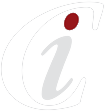A vállalati versenyképességet folyamatosan alakítja a technológia robbanásszerű fejlődése, a globalizáció és a hiper-versenyhelyzet. Emellett a disztruptív innovációk iparágakat írnak újjá és az ezeket birtokló piaci szereplők exponenciálisan nagy versenyelőnyre tesznek szert. A VUCA környezet mára állandó valósággá vált, olyan eseményekkel tarkítva, mint a 2020-2021-ben katasztrófának minősíthető globális egészségügyi és gazdasági válsághelyzet. A vállalatok külső és belső illeszkedési stratégiája, rugalmassága, adaptivitása mára kulcskérdéssé vált. Ehhez tudniuk kell honnan indulnak és milyen időszakra tudnak vagy akarnak tervezni. Az agilis működés és munkamód igen eltérő az uralkodó szervezeti és üzleti modellekhez képest. Központjában az értékteremtés áll a munkatársak belső motivációjára való alapozás, a képességeik maximumának elérése és az elkötelezettségük alapján. A fejlesztő világban módszertanának köszönhetően rugalmas, gyors reagálású, innovatív és versenyképes szervezeti teljesítmény érhető el. A cikkben agilis működést gyakorló szakemberek által használt legtipikusabb mérési módszereket vázolom, elsősorban a projekt menedzsment szakirodalmi feldolgozás és a vállalati agilis jó gyakorlatok alapján.
IX. ÉVF. 2021. 2. SZÁM 50-58
DOI: 10.24387/CI.2021.2.9
Felhasznált irodalom
ACCENTURE (2017): From Fragile to Agile Fast, rIport. Letöltve: 2018. szeptember 29. https://www.accenture.com/t20170328T065747__w__/no-en/_acnmedia/PDF-47/Accenture-Nordic-PDF-Agile-Fast.pdf
AGILE MANIFESTO (2001): Manifesto for Agile Software Development. http://www.agilemanifesto.org/
ARGYRIS, C. (1977): Douple Loop Learning in Organizations, Magazine, September
BARNES, M. (1988): Construction project management, International Journal of Project Management, Volume 6, Issue 2, https://doi.org/10.1016/0263-7863(88)90028-2
BOEHM, B. – TURNER, R. (2014): Management challenges to implementing agile processes in traditional development organizations, IEEE Software, vol. 22, no. 5, pp. 30-39, Sept.-Oct. 2005, doi: 10.1109/MS.2005.129.
CASTEREN, V. W. (2017): The Waterfall model and the Agile methodology, Adademic Competences in the Bachelor 2 assignment. Letöltve: 2018. október 4. DOI: 10.13140/RG.2.2.36825.72805
CHIKÁN ATTILA – GELEI ANDREA. (2007): Vállalati versenyképesség -vevői érték és a képesség alapú megközelítés összekapcsolása, Vezetéstudomány, XXXVIII. Évf. 2007. 3. szám
CHRISTENSEN, M. C. (1997): The Innovator’s Dilemma: When New Technologies Cause Great Firms to Fail, Harvard Business Review Press
DEGRACE, P. – STAHL, L. H. (1991): Wicked Problems, Righteous Solutions, Prentice Hall, New Jersey
DINGSøYR, T. – NERUR, S. – BALIJEPALLY, V. – MOE, N. B. (2012): A decade of agile methodologies: Towards explaining agile software development, Journal of Systems and Software 85(6), June, DOI: 10.1016/j.jss.2012.02.033
Fenyves, V. (2019): Controllerekel szembeni munkaerôpiaci elvárások vizsgálata CONTROLLER INFO 7 : 4 pp. 33-40. , 8 p.
Fenyves V. – Tarnóczi T. (2019): Examination of the expectations of controllers on the labour market
CORPORATE OWNERSHIP AND CONTROL 17 : 1 pp. 60-70.
GÁBOR, Á. – ZÉMAN, Z. (2016): The Encounter of Project Control and Innovation in a New Business Model – or, Book-Save-Sleep Wisely, International Journal of Innovation and Research in Educational Sciences
Volume 3, Issue 1, ISSN (Online): 2349–5219
GALLUP (2018): The real future of the work, report. Letöltve: 2018. szeptember 3., https://www.gallup.com/workplace/232382/real-future-work.aspx
GALLUP (2016): The Gig Economy and Alternative Work Arrangements, letöltve 2020. november 3. http://acrip.co/contenidos-acrip/gallup/2020/mayo/gallup-perspective-gig-economy-perspective-paper.pdf
GOLDMAN, S.L., – NAGEL, R.N. – PREISS, K. (1995): Agile Competitors and Virtual Organisations – Measuring Agility and Infrastructure for Agility, Van Nostrand Reinhold, New York, NY.
GUPTA, U. G. – MITTAL, R. O. (1996): Quality, time and innovation based performance measurement system for agile manufacturing, Proc. Annu. Meet. Decis. Sci. Ins. 3.
HOLOTIUK, F. – BEIMBORN, D. – JENTSCH, C. (2018): The determinants and role of agility in digital organizations, Research Papers, 182., https://aisel.aisnet.org/ecis2018_rp/182
KRISHNAMURTHY, R. – YAUCH, C.A. (2007): Leagile manufacturing: a proposed corporate infrastructure, International Journal of Operations and Productions Management, Vol. 27 No. 6.
LIPTÁK, K. – HAJDÚ, N. – SZŰCSNÉ MARKOVICS, K. – MUSINSZKI, Z. (2021): Innovative Financial Indicators – from ROI to Marketing ROI. In: Klaus, F. Zimmermann (szerk.) 35th EBES Conference Proceedings Vol. 1. Rome, Italy, 7-9 April 2021. pp. 491-499.
MCKINSEY (2018): The five trademarks of agile organizations, report. Letöltve: 2018. augusztus 15. https://www.mckinsey.com/business-functions/organization/our-insights/the-five-trademarks-of-agile-organizations
MUSINSZKI, Z. − VALLASEK, M. − MÉLYPATAKI, G. − HORVÁTHNÉ, C. E. − LIPTÁK, K. (2020): Workaholism and a New Generation – Labour Market Survey among Hungarian and Romanian Youth. Amfiteatru Economic, 22(14), pp. 1227–1242. http://doi.org/10.24818/EA/2020/S14/1227
MUSINSZKI, Z. − SÜVEGES, G. B. (2019): Strategic decision-making supported by traditional financial indicators. Oradea Journal Of Business And Economics, 4(1), pp. 29–37.
OHNO, T. (1988): Toyota Production System: Beyond Large-Scale Production, Productivity Press, New York. ISBN 0-915299-14-3
OOSTERHOUT, V. M. – WAARTS, E. – HECK, V. E. – HILLEGERSBERG, V. J. (2007): Business Agility: Need, Readiness and Alignment with IT Strategies, Agile Information System, Routledge, ISBN 9780750682350
OVERBY, E. – BHARADWAJ, A. – SAMBAMURTHY, V. (2011): A framework for enterprise agility and the enabling role of digital options, IFIP International Working Conference on Business Agility and Information Technology Diffusion, January, DOI: 10.1007/0-387-25590-7_19
NAGEL, R. N. (1992): 21st Century Manufacturing Enterprise Strategy Report, Iacocca Institute, Lehigh University
NEELY, A. D. – MILLS, J. F. – GREGORY, M. J. – RICHARDS, A. H. – PLATTS, K. W. – BOURNE, M. C. S. (1996): Getting the measure of your business, Findlay, London.
RAZMI, B. – GHASEMI, H. M. (2015): Designing a model of organizational agility: A case study of Ardabil Gas Company, International Journal of Organizational Leadership, 4/2015.
RIES, E. (2011): The Lean Startup, Crown Publishing Group, New York, ISBN: 0307887898
ROJCE, W. W. (1970): Managing the Development of Large Software Systems, Technical Papers of Western Electronic Show and Convention, August
SCHUMPETER, A. J. (1942): Capitalism, Socialism and Democracy, Routledge, ISBN 9780415107624
STETTINA, J. – HÖRZ, J. (2015): Agile portfolio management: An empirical perspective on the practice in use, International Journal of Project Management 33, http://dx.doi.org/ 10.1016/j.ijproman.2014.03.008
SUTHERLAND, J. – SCHWABER, K. (1995): Business object design and implementation: OOPSLA ’95 Workshop Proceedings. The University of Michigan. ISBN 3-540-76096-2.
TAKEUCHI, H. – NONAKA, I. (1986): The New New Product Development Game, Harvard Business Review, January-February
YUSUF, Y. – SHARHADI, M. – GUNASEKARAN, A. (1999): Agile Manufacturing: The Drivers, Concepts and Attributes. In-ternational Journal of Production Economics, 62. https://doi.org/10.1016/S0925-5273(98)00219-9
WYSOCKI, R. K. (2009): Effective Project Management: Traditional, Agile, Extreme, Wiley, New Jersey
ZÉMAN Z. (2018): The Development of accounting discipline int he light of macro and micro economic relations. WCTC LTD. London p.60. ISBN 9786150011363
